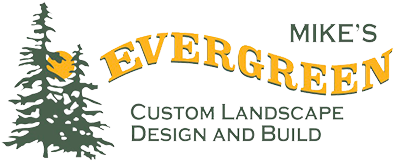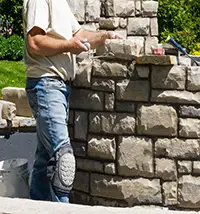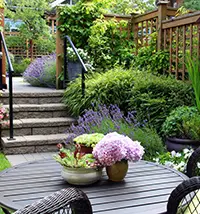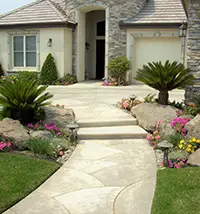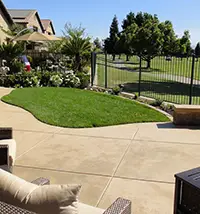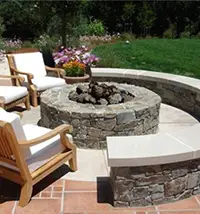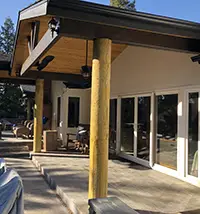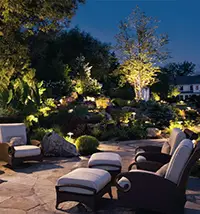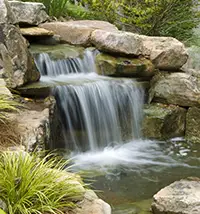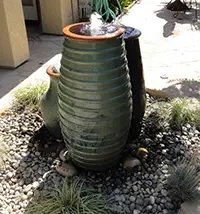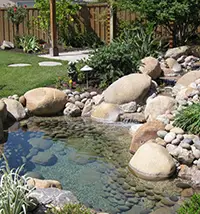Landscaper FAQ
Ready for some answers to Landscaper FAQ (frequently asked questions)? We hope you’ll find what you need here.
Mike’s Evergreen has been a family owned and operated landscape business serving Fresno and Clovis since 1987, and we’ve answered quite a few questions in that time. So if you don’t find the answer to your specific question here, we invite you to contact us directly.
Here are some of those most frequently asked questions about landscapers:
- What is a landscaper?
- What do landscapers do?
- What’s the difference between a landscaper and a gardener?
- What’s the difference between a landscaper and a landscape architect?
- When do I need to hire a landscaper?
- How do I choose a good landscaper?
- What should I ask when hiring a landscaper?
- What things should I consider when hiring a landscaper?
- How much does landscaping cost?
- What are the different types of landscaping?
- What does landscaping consist of?
- What qualities should a landscaper have?
- Is landscaping worth the money?
- What is a good landscaping budget?
- Does landscaping add value to your home?
- Why should I hire a professional landscaper?
- Should I landscape before selling?
- What are the benefits of water features in my landscape?
- How do I know if I need to renovate my backyard?
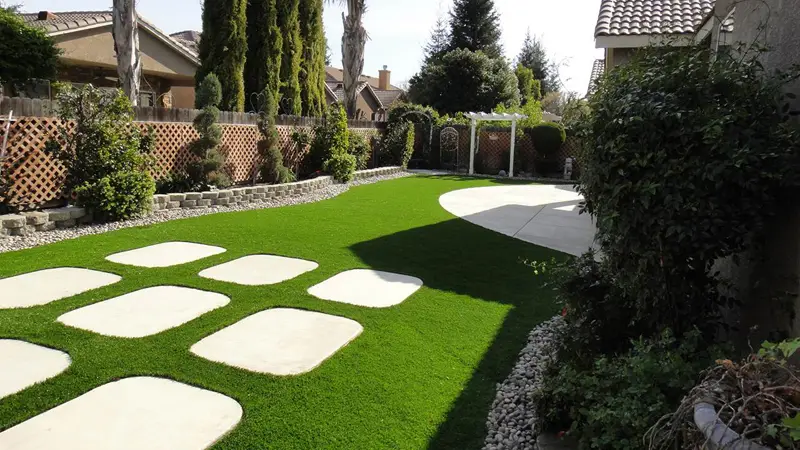
What is a landscaper?
A landscaper is someone who creates and cares for green spaces. Those green spaces can be residential yards and gardens, landscaping on commercial property, or public green space like parks.
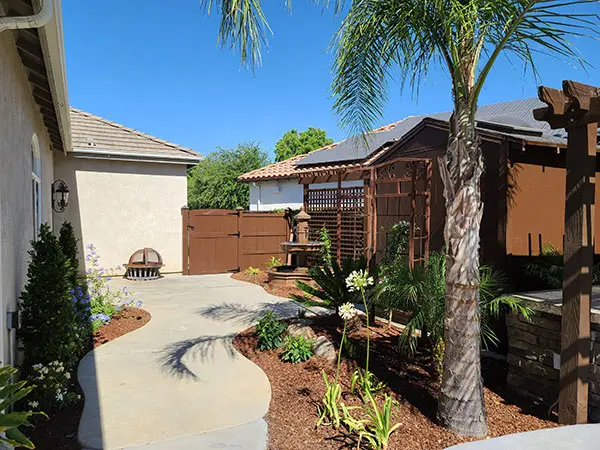
What do landscapers do?
Landscapers work with you to create an outdoor environment suited to your tastes, lifestyle, and property. That can include design, construction, planting, installing irrigation, renovation, maintenance, repair, and so much more.
Landscapers add curb appeal to your property. They can give you the outdoor living space — including outdoor kitchens, fire pits and outdoor fireplaces, patios and pergolas, etc. — you’ve dreamed of. They can help you add koi ponds and other water features to your yard.
They give the green space surrounding your home or office the custom touch that makes it uniquely yours.
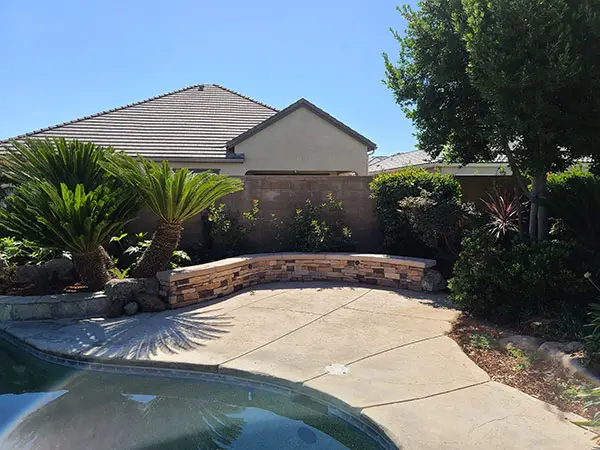
What’s the difference between a landscaper and a gardener?
The difference between a landscaper and a gardener is the scope of work that they perform. Gardeners usually only work with plants and trees in a space, including the irrigation system to keep them alive. They also often perform landscaping maintenance and lawn maintenance services like lawn mowing services, lawn care, fertilization, weed control, and clean-up.
Landscapers, on the other hand, work with plants AND all the other elements of your entire landscape, including hardscapes, waterscapes, outdoor living spaces, outdoor lighting, etc.
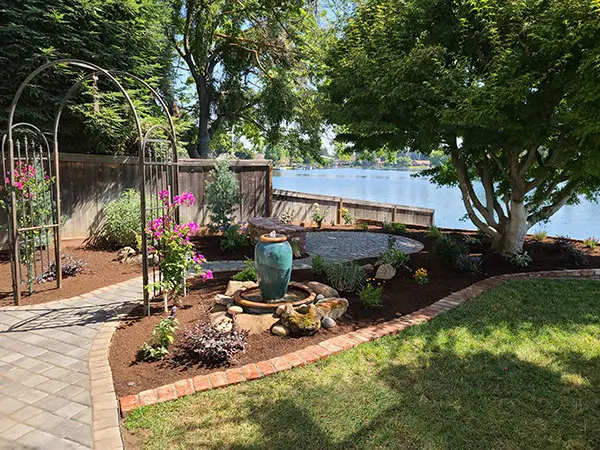
What’s the difference between a landscaper and a landscape architect?
The difference between a landscaper and a landscape architect is also a difference in scope. A landscape architect typically works on the overall plan and design of large projects, often commercial or public properties. And a landscape architect holds a college degree and must pass an exam to receive a landscape architect license.
A landscaper may hold a contractor’s license, but is not required to have a college degree. It’s more common for a landscaper to work with residential and smaller-scale commercial projects.
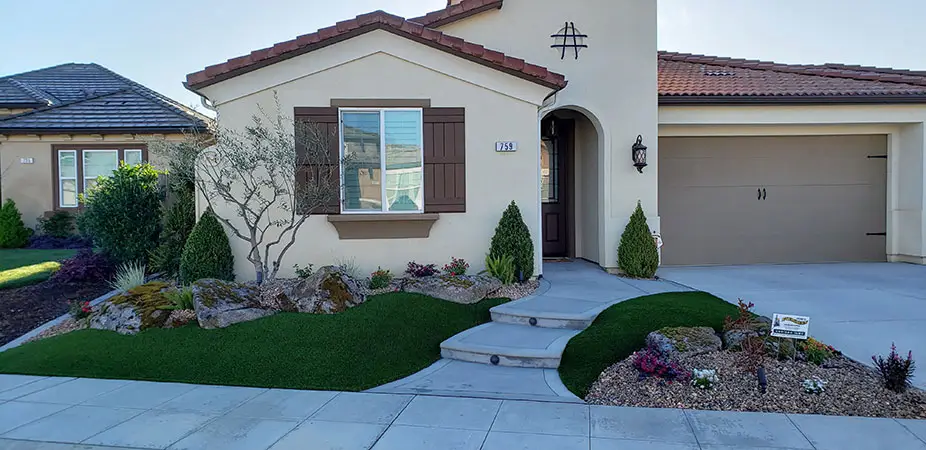
When do I need to hire a landscaper?
Any time is a good time to hire a landscaper. Landscapers can help you design and customize a brand-new space — literally — from the ground up … when you’re building a new home, for example. Or they can help you renovate and reimagine an existing space.
There are different seasonal benefits of landscaping in the spring, fall, and winter months. So you’ll want to discuss how any specific seasonal issues affect the work you want done with any landscaper you consider hiring.
If you are dissatisfied, frustrated, or feeling anything less than joy and happiness with the green space on your property, you need to hire a landscaper as soon as possible. You deserve a beautiful space that you can be proud of and enjoy, and a landscaper can bring that to life for you.
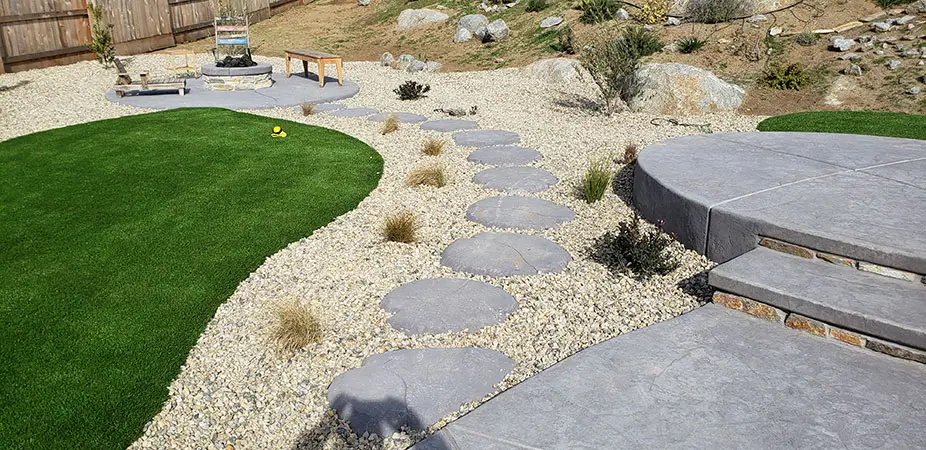
How do I choose a good landscaper?
Nobody wants to waste their time or money on a bad landscaper, and luckily there are some things you can look for in determining how good a landscaper is.
First, look for what other people have to say about working with them. Read their reviews and testimonials.
Also, check to see if they’re accredited by the Better Business Bureau and what their BBB rating is.
And, because seeing is believing, ask to see pictures of their work.
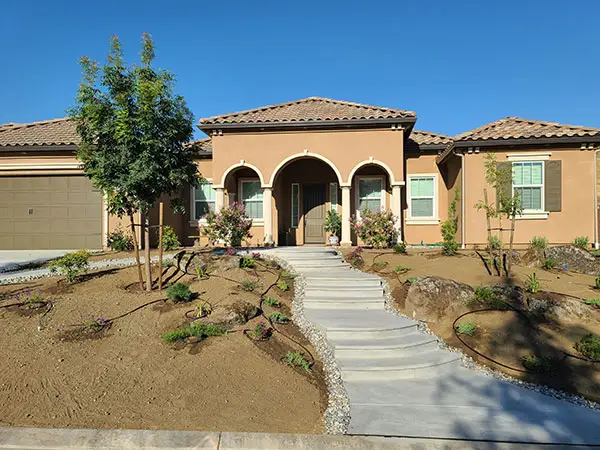
What should I ask when hiring a landscaper?
You should feel free to ask as many questions as you need to in order to feel comfortable and confident with a landscaper. Here are a few questions you may want to ask before you hire someone for your landscape project:
- What services do you offer?
- Are you bonded and insured?
- What certifications do you have?
- What are your specific specialties?
- How much experience do you have?
- Can I speak to some references?
You may also be interested in these 10 Important Questions to Ask a Landscape Contractor.
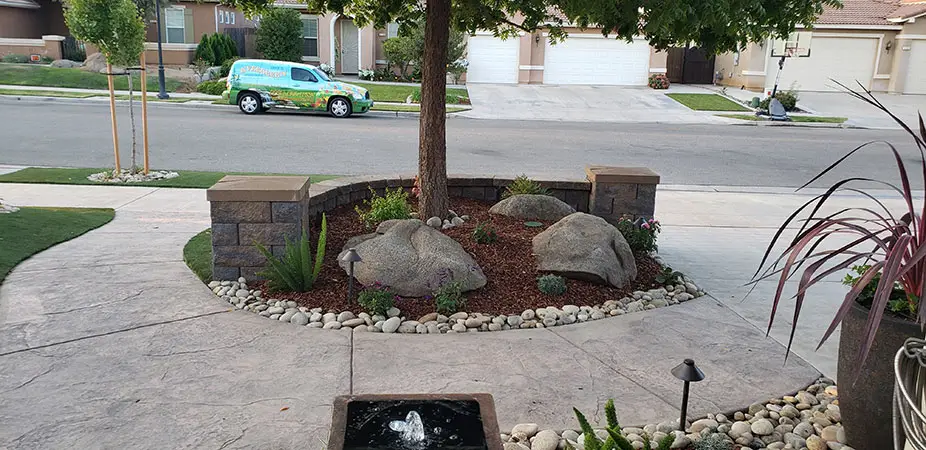
What things should I consider when hiring a landscaping company?
Landscapers are diverse, so you need to consider your preferences and the specific scope of what you need done to be sure they’re qualified to do what you’re looking for.
For example, if you want a koi pond or other water features in your landscape, you’ll want a landscaper with experience and expertise in those things. Similarly, if you’re looking for an outdoor kitchen, custom concrete work, or retaining walls … to mention just a few.
You also want to consider their customer service and their overall approach to business. This is not a simple one-time transaction, you’ll be working with a landscaper over a period of time. So you want to be sure you like and trust them.
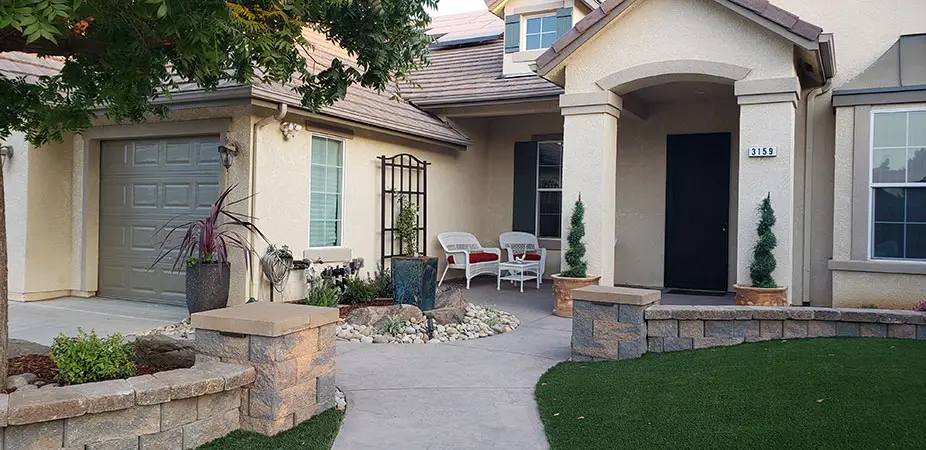
How much does landscaping cost?
Most people have never hired a landscape contractor before and may be uncertain about the costs involved. The national average cost to build a landscape from a professional is $30,000, but that number depends entirely on what landscape features you include, the size of your yard, and if the project is a renovation or new construction. Because of this, we regularly work with budgets from $20,000 to $150,000 or more. However, many offer a free consultation and will be able to estimate what your project will cost.
When construction is involved — such as outdoor kitchens, pergolas and patios, or fireplaces and fire pits — the investment is higher as material and labor costs are higher.
You should ALWAYS get a cost estimate before you hire a landscaper.
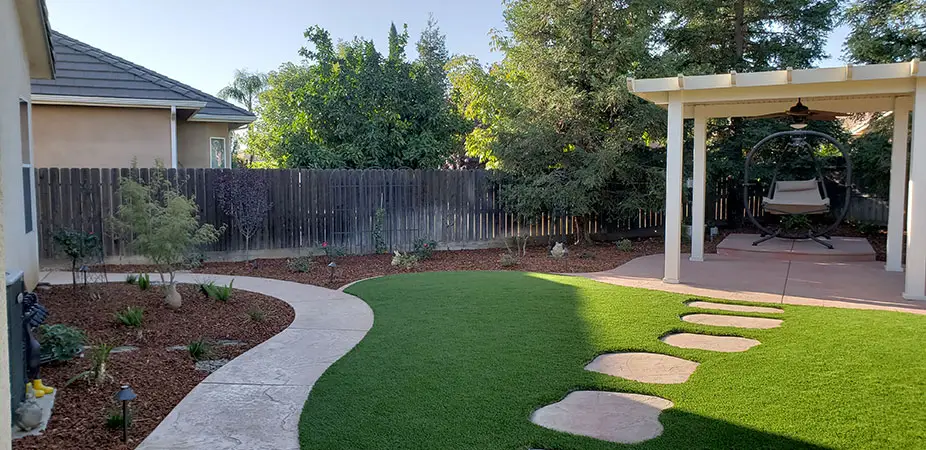
What are the different types of landscaping?
Some people think landscaping is just your lawn, trees, shrubs, and flowers in your yard. It is that, but also so much more.
Landscaping also can include the following:
- Hardscaping — including retaining walls, custom concrete work, patios, arbors, outdoor fireplaces, outdoor kitchens, etc.
- Waterscapes
- Curb Appeal Landscaping
- Flower Garden Landscaping
- Desert Landscaping
- Drought Tolerant Landscaping (also known as Xeriscape Landscaping)
- Minimalist Landscaping
Different types of landscaping also can be defined as new construction landscaping (starting from scratch), or renovation landscaping (taking existing landscaping and making minor to drastic changes and improvements).
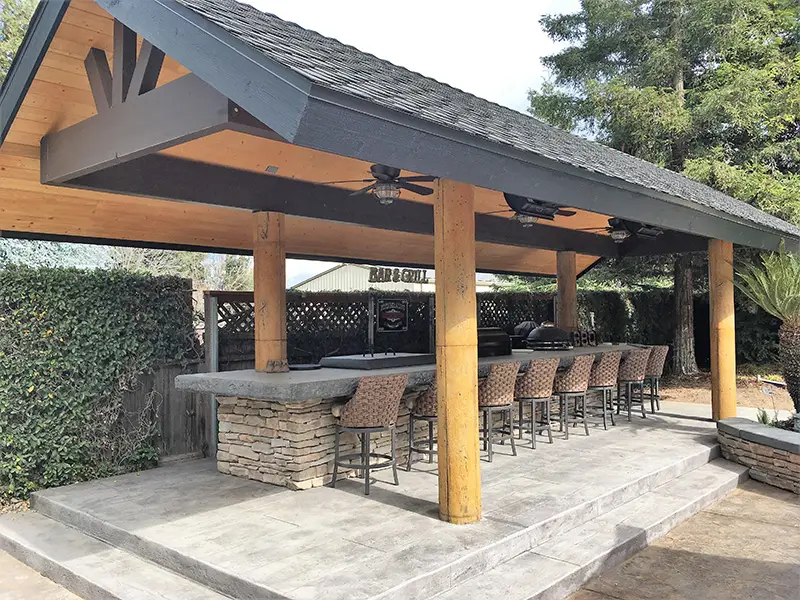
What does landscaping consist of?
Landscaping Network defines landscaping as “a process that makes changes to an area of land in one or all of the following three categories: plants, terrain, and/or structures.”
It includes the design and planning, planting, installation, construction, and/or the maintenance of the outdoor spaces around a home or commercial property. Landscaping can include adding plants, pavers, walkways, patio covers, arbors, water features, year-round lawns, and more.
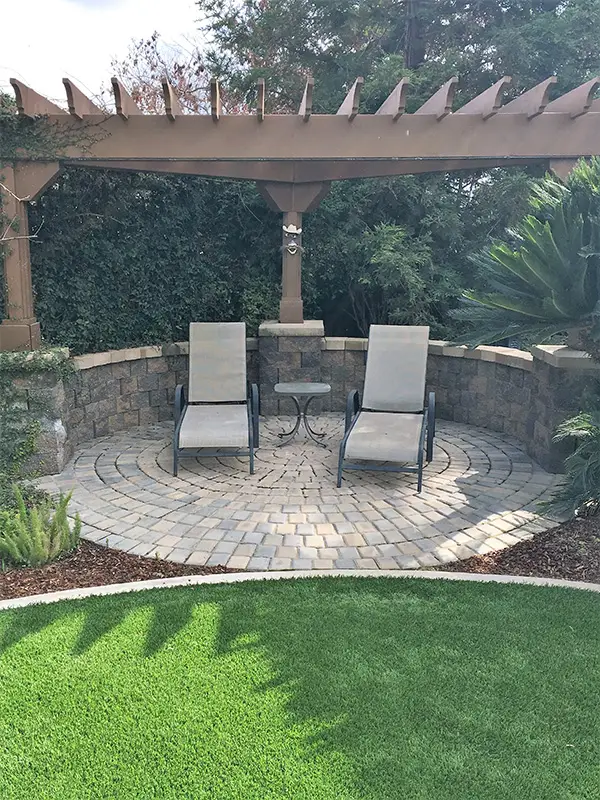
What qualities should a landscaper have?
A good landscaper will be professional and detail-oriented. They will be a good communicator who listens to your ideas and keeps you up to date with their progress and any changes to the schedule.
They also should be experienced with the type of landscaping that you want to create. They should have positive testimonials and recommendations from other clients as well as a portfolio of their work (click here to see ours).
A good landscaper also will be knowledgeable about growing conditions and environmental concerns in your area. For example, while Fresno, Clovis, Sanger, Reedley, Visalia, Kerman, and Lemoore are all in the Central Valley there can be slightly different growing conditions and concerns in each city. So make sure the landscaper you hire has experience in your specific city not just your general area.
In addition to looking for these general qualities, be sure to ask these 10 Important Questions (click here to see the questions) when you’re hiring a landscaper.
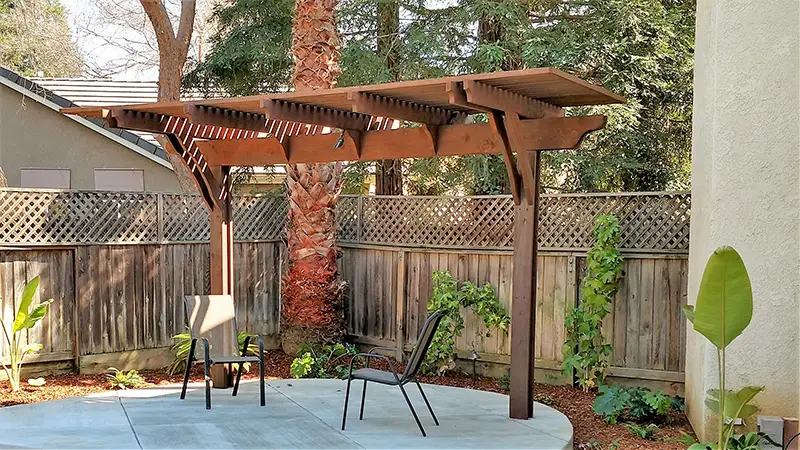
Is landscaping worth the money?
Determining the worth of something is somewhat subjective. How do you put a monetary value on your pleasure and enjoyment of your yard?
However, that being said, most real estate agents (over 75% of top real estate agents nationwide, according to HomeLight) say that well-landscaped homes are worth up to 10% more than homes with no landscaping.
And SFGate reports that landscaping is one of the few home improvements that not only adds to your property value immediately, but also increases in value as time goes by.
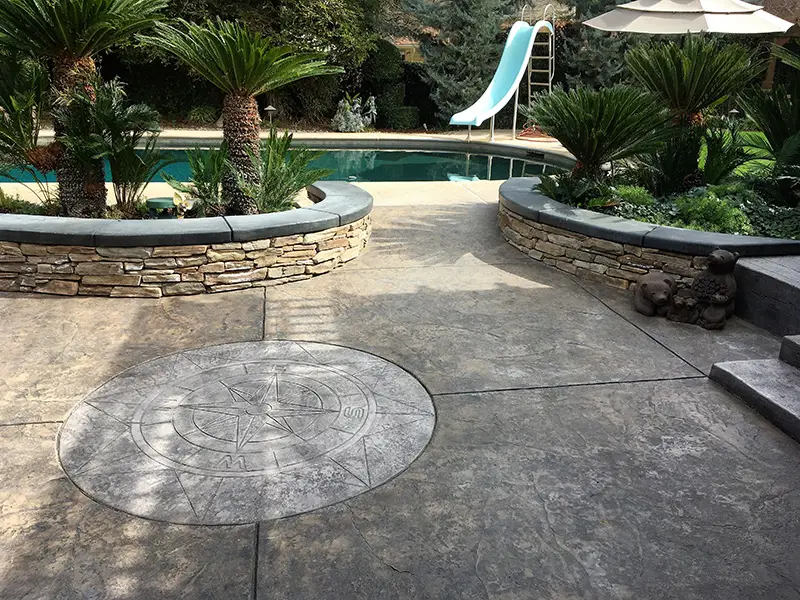
What is a good landscaping budget?
The parameters for determining a good landscaping budget have to include the size of your property, the type of landscaping you want done, and the amount of labor involved in the project.
On average, homeowners can invest several thousands of dollars up to tens of thousands on landscaping.
Because there are so many factors, it’s best to speak to an experienced local landscaper to get a better idea of what is an appropriate landscaping budget for the landscape you want at your home or commercial property.
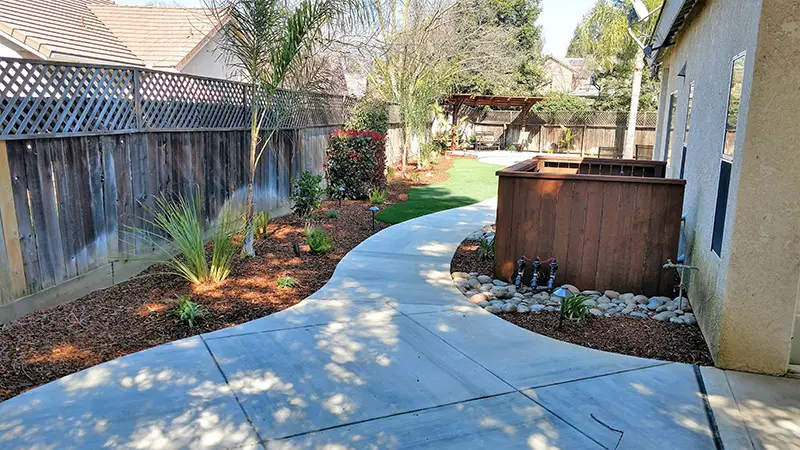
Does landscaping add value to your home?
Real estate experts agree that landscaping adds value to your home. HomeLight research suggests that landscaping adds up to 10% more value to a home. While Better Homes & Gardens quotes Opendoor trends expert Beatrice de Jong as saying that a well-maintained landscape adds 5%-12% more value to a home.
To put that in perspective, if your home is valued at $300,000, landscaping can add $15,000 to $30,000 — or more — in value.
However, landscaping adds value beyond just the increased monetary amount that your home may be worth when you sell it. Landscaping also adds lifestyle value and personal enjoyment value. And those are priceless.
Click here to read more on 7 Ways Landscaping Can Improve the Value of Your Home.
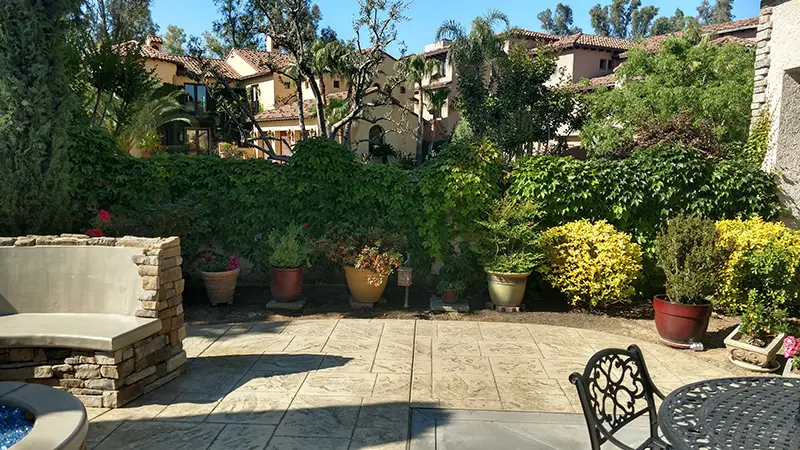
Why should I hire a professional landscaper?
There are many reasons why people hire professional landscapers. Here are a few:
- To save time
- To utilize expertise and skills you don’t have
- To get better results
- Because they can see more potential
- So you don’t have to do it yourself
- To save money due to costly DIY mistakes
- Healthier plants and trees
- To reduce future problems and issues
A beautiful, healthy, functional landscape doesn’t happen on its own. Hiring a professional landscaper is arguably the fastest, easiest way to get an outdoor space you’ll love.
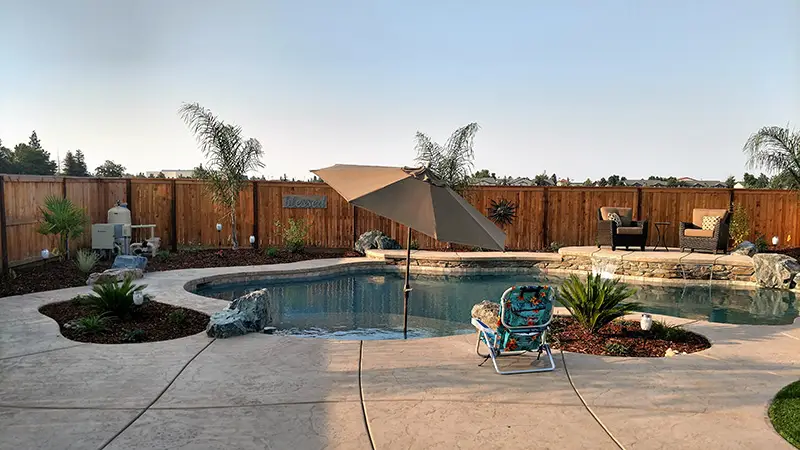
Should I landscape before selling?
Landscaping adds value to a home, but you should consult with both your realtor and a landscaper to make sure that whatever improvements you make before selling make the most sense.
For example, adding a koi pond may not be a landscape improvement that would appeal to all buyers. Curb appeal landscaping such as replacing dead grass with new sod, on the other hand, is probably a good decision.
You definitely need to tell your landscaper if you’re getting your home ready to sell so that they can work with you to make sure you get the most return on your investment.
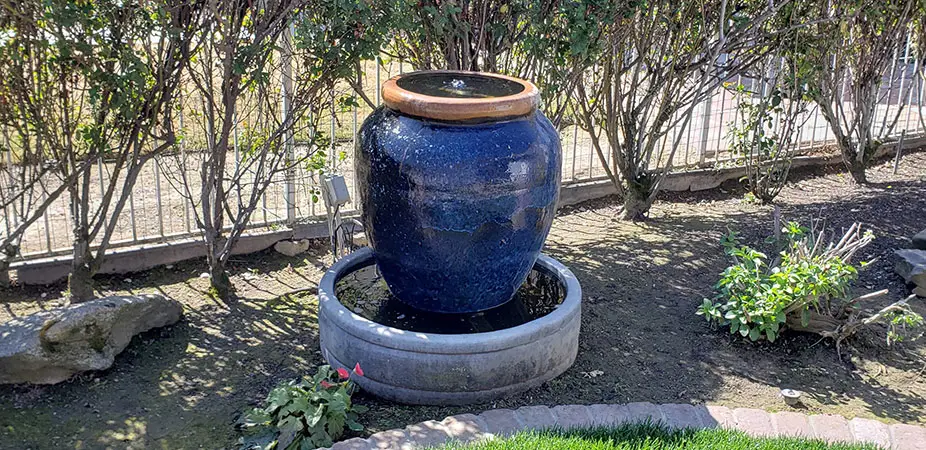
What are the benefits of water features in my landscape?
Water features can turn a landscape from ordinary to extraordinary. Koi ponds, waterfalls, fountains, and garden streams can be focal points as well as provide a peaceful and calming ambiance to your yard.
They can even be good for you! Gardenerdy reports that “simply looking at water (a stream, waterfall, etc.) for some time can restore blood pressure and heart rate to normal levels.” Further, “having a water source in the vicinity helps lessen pain experienced by patients recovering from surgeries.”
Other benefits of water features in your landscape include:
- Reduce noise pollution
- Attract wildlife
- Add property value
Check out some fountain designs for backyards here.
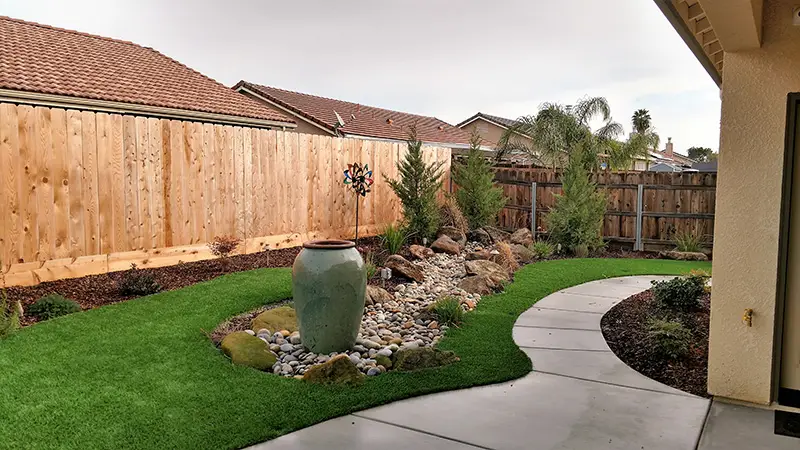
How do I know if I need to renovate my backyard?
The decision to renovate your backyard — or not — is yours to make. Among other things, you’ll want to consider your lifestyle, your budget, and the current condition of your backyard.
Sometimes small improvements can make a big difference. Other situations require a full renovation.
It’s always best to discuss your options and landscape ideas with a professional landscaper. They’ll be able to tell you what’s possible and then help you determine your best course of action to get you the results you want with your backyard landscape design.
Why Choose Mike’s Evergreen
Mike’s Evergreen is the right choice for your landscaping needs because our crew members are the Valley’s premier outdoor living experts. We work hard to understand your goals and provide quality results that will exceed your expectations. We understand that one of your biggest and most important investments is your home or business. Your objectives, lifestyle, personality, as well as the specific needs of your property are carefully considered to reflect a landscape that will provide beauty, function, and value to your home or property. Mike’s Evergreen offers a complete range of landscape services so we can make your yard look the way you intend it to.
Landscape Design and Installation Services – Fresno and Clovis, CA
Construction
Landscape Construction projects are permanent to semi-permanent installations and should be considered an investment in your home.
Outdoor Living
Custom designed outdoor living areas allow you to have a beautiful and functional living space to entertain and enjoy with family and friends.
Custom Concrete
Brighten up your landscape with a custom colored or stamped designed concrete path, driveway or patio.
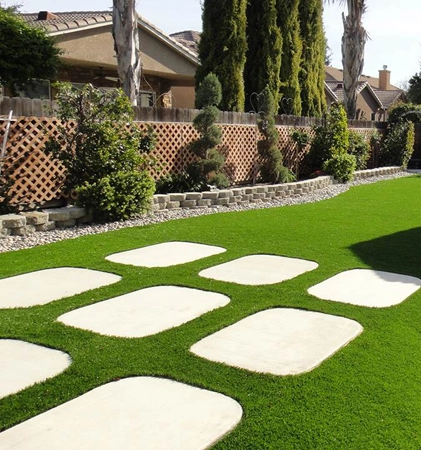
Pavers & Flagstone
Typically installed as an alternative to concrete, pavers and flagstone come in many shapes, sizes and patterns.
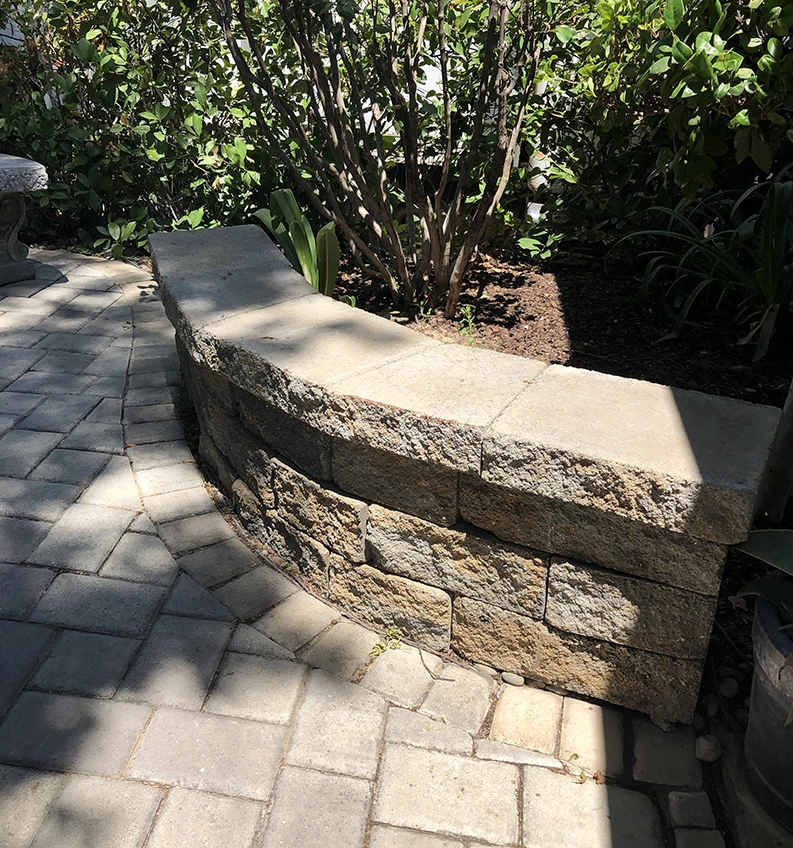
Retaining Walls
Landscape retaining walls are utilized to increase usable space, provide additional elevations, seating, and planting areas.
Fire Pits & Fireplaces
Fire Pits and Fireplaces are both structures that provide a visual focal point while giving off warmth and light.
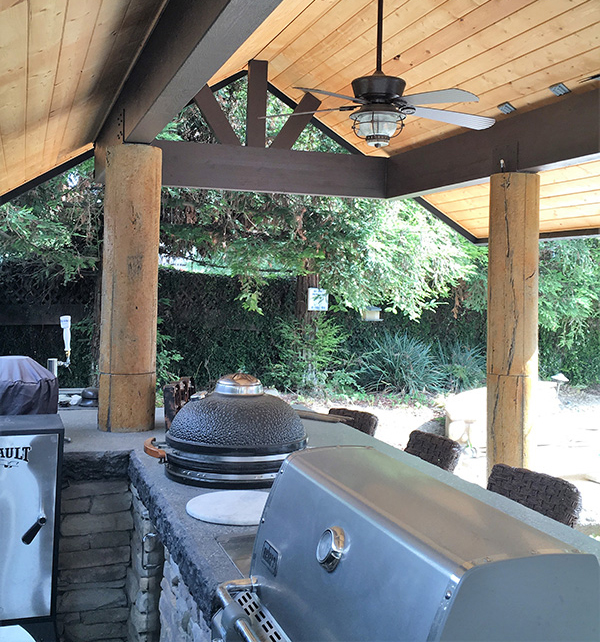
Outdoor Kitchens
Take your entertaining to the next level with the ideal outdoor setting for you and your guests.
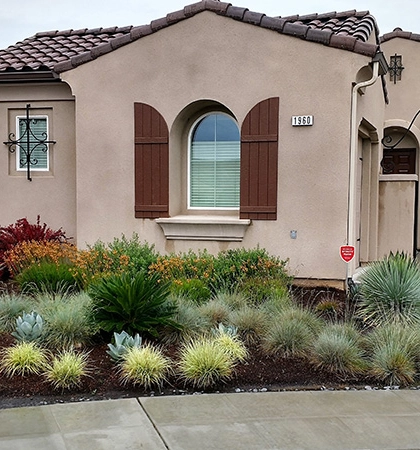
Drought Resistant & Xeriscape
Is your idea of a drought-tolerant landscape rocks and cactus? Think again!
We can design your yard to save water with a drought-tolerant or xeriscape landscape. We can create an entertainment area with hardscape and colorful pots with plants/flowers supplied with drip irrigation. You could have a serene area with a fountain that re-circulates the water. We pick plants that are adapted to our climate and can thrive with low water and low maintenance. Even with our current drought, you don’t have to stop using your front or back yard.
Water Features
Mike’s Evergreen can install a variety of water features for your home. From ponds and waterfalls to fountains and bubbling pots.
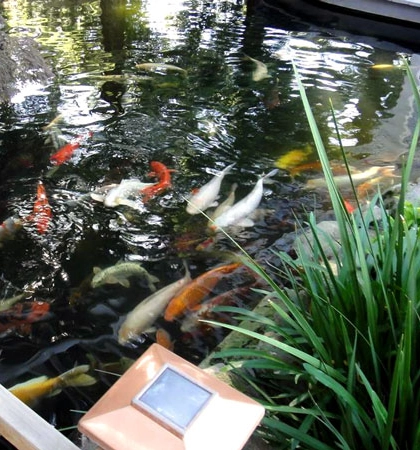
Koi Ponds
Mike’s Evergreen can design the perfect Koi pond for your yard, whether you have a small space or a large space, there is a pond for you.
Sprinkler Repairs
Broken Pipes and Leaks – We’ll fix a geyser or muddy spot in the yard.
Timer/Controller Adjustment – We’ll adjust your timer to keep your yard green and avoid over-watering.
Sprinkler Heads Repaired – We’ll get each sprinkler set just right and replace any broken ones.
Drip Irrigation – We’ll check your entire system to ensure it works properly and fix any issues.
Your Vision Our Design
Your project will seamlessly go from the design stage to completion. 3D design is an effective tool for you because you can see your project before we even break ground. It just makes sense to have an actual Landscape Contractor do the design, as we will also be the builder and are better equipped to understand your budget versus labor and material costs and what is realistic.
Landscaping Tips
Revitalize Your Lawn through Aeration.
By creating hundreds of little holes in your lawn’s surface, allows for rain water and nutrients to more quickly penetrate the surface of the lawn. This also feeds the roots of your plants and grass. By aerating your lawn, you’ll help prevent the soil from becoming compact, which allows the root systems of your lawn to grow deeper. Aeration occurs when you use a tool specifically designed for aerating your lawn. It is a tool with little spikes that puncture your lawn as you roll it across your yard. The little puncture marks provide fresh air to penetrate to the root system of your turf.
Your lawn will stay looking more beautiful and healthy if you aerate it.
How to Prune Rose Bushes
- Use clean, sharp tools.
- Look at the overall plant, but begin pruning from the base of the plant.
- Prune to open the center of the plant to add light and air circulation.
- Make your cuts at a 45-degree angle, about 1/4 inch above a bud that is facing toward the outside of the plant.
- Ensure it is a clean cut (not ragged).
- Remove all broken, dead, dying or diseased wood (any branches that look dry, shriveled or black). Cut until the inside of the cane is white.
- Prune any weak or twiggy branches thinner than a pencil.
- Remove sucker growth below the graft.
- Trim any remaining foliage.
There are certain things a tree owner must know to keep trees healthy and in the very best condition. Here are just a few:
Limit Staking Your Tree
Tree staking is never done with the intention of harming a tree. Staking is usually done with love and with a desire to promote root and trunk growth and protect a young tree from harm.
What some tree planters do not understand is, rather than helping a tree develop root and trunk growth, improper tree staking replaces a supportive trunk and root system with an artificial support that causes the tree to put its resources into growing taller but not growing wider.
Protect a Tree’s CRZ
Before starting a mulching project, become familiar with the critical root zone (CRZ) or tree protection zone. This zone is generally defined as the area under a tree and out to its drip line. Improving conditions in this protection zone will also result in major health benefits to a tree.
Mulch Your Tree
Mulching is the most beneficial thing a home owner can do for the health of a young tree. Mulches are materials placed on the soil surface to improve soil structure, oxygen levels, temperature, and moisture availability.
Fertilize Your Tree
Ideally, growing trees should be fertilized throughout the year. The greatest amounts should be applied during the early spring and summer months. Several light applications a year are preferred as the tree gets older.
Prune Your Tree
Pruning is essential in developing a tree with a strong structure and desirable form.
Storm Proof Your Tree
A tree is never in greater danger than during a storm. That can mean a threat from pounding rain and hail, from the fury of the wind or the scorch of lightning. You may also have to remove a tree that endangers life and property during or after a storm.
Winterize Your Tree
Trees in Fall are beginning their dormant phase. Some trees may seem to be inactive but the fact is they need to be winterized – protected and cared for to remain healthy and free from diseases and insects.
Prepare Your Landscape for Spring
After the last cold snap, it’s time to clean up all the accumulated debris from your lawn. You want to help your landscape get off to a healthy start by doing the following:
- Remove all leaves and other plant debris such as sticks and dead plants.
- Aerate damaged areas by turning over dirt and removing plugs of dirt.
- Mow the lawn about 30 percent shorter than you would normally.
- Apply seed or starter fertilizer according to manufacturer instructions.
- Cover all patches with peat moss or mulch.
- Thoroughly water your lawn and keep it consistently moist for two to four weeks.
- Fertilize again after four weeks.
Freezing temperatures can be damaging to a landscape. There are a few things you can do to help keep your landscape protected, even in harsh winters.
The key is to remove debris, leaves, pine needles and unwanted branches from around your landscape. If these items are not removed, they can contribute to rot and mold along with other lawn diseases. By removing them, you’re leaving plenty of room for new growth that will contribute to a healthy landscape in the spring.
It is also very important to keep your lawn weeded regularly. You can weed by hand or by applying herbicides so that your turf has plenty of room for growth.
Winter is the perfect time to aerate and de-thatch your turf. During summer months, it gets packed down and tangled. Aerating will help open up your turf to fresh air, water and nutrients that are imperative for healthy growth.
Protect your lawn from freeze damage by doing the following before a freeze:
Water Your Lawn
Thoroughly water your landscape plants before a freeze. This can help reduce any change in your plants caused by freeze damage. Cold and dry winds often accompany cold weather, which can dry out plants. By watering your plants, you will help retain moisture. Wetting the foliage of plants before a freeze does not, however, provide any cold protection. A well-watered soil will also absorb more solar radiation than dry soil and will re-radiate the heat during the night.
Move Plants Inside
If possible you’ll want to move all your plants, in containers, inside your home, where the temperatures will stay above freezing. If it’s not possible to bring them inside, try to place them close to the base of your home to help keep them as warm as possible during a freeze. Covering your plants in plastic can also help keep them from getting freeze damage. If you move your plants inside, make sure you give them as much light as possible, so they can continue to grow.
Mulch
Mulch can help protect plants that are in ground. Using dry material like pine or straw will help keep moisture in. You should be aware that mulches will only protect what they cover. Mulch at the base of a bird-of-paradise will help the roots, but will provide no added protection to the leaves. Mulches, then, are best used to protect below-ground parts or crowns or may be used to completely cover low-growing plants to a depth of four inches. Leave cover on no more than three or four days.
Cover
Do your best to cover any outside plants with plastic or cardboard boxes. Styrofoam boxes also help with insulation. You want to cover them the best you can to avoid freeze damage.
Proper Care of plants in the cold winter includes making sure you do a deciduous perennial cut back. This allows the perennials to focus on the growth necessary in early spring to maximize the foliage and blooms throughout the year. Without proper care and attention, perennials will have to fight through the old growth in the spring time. You want to cut them back, so they have plenty of room to flourish. Unfortunately, winter perennial cut back are often overlooked. Make time and effort to cut back your perennials. You’ll be able to see a noticeable difference during their peak season.
There’s no better way to get into the holiday spirit than to decorate your home with beautiful poinsettias. The scientific term for poinsettias is: Euphorbia Pulcherrima. Introduced in the United States by Joel Roberts Poinsett (who fell in love with the plant called flor de noche Buena – while U.S. ambassador to Mexico in 1828 and began growing and giving them out as gifts in his home state of South Carolina), they make up 85% of potted plant sales during the holiday season.
Poinsettias are commercially grown in every state, with California the top producer, and though they come in other colors such as white, pink, orange, pale green and cream, red is the most popular and preferred. They can grow to be several feet in height and bear dark green leaves that measure three to six inches in length. To acquire color, it must be left in the dark for 12 hours at a time; at the same time, the plant needs much light during the day to reach a bright color.
They are a perennial, tropical (non-tolerant to freeze, which means you must bring them in when it gets too cold) shrub that exudes holiday cheer with their vibrant and festive colors. Whether adding to your courtyard design outside or livening up your foyer to greet family, friends and guests inside, poinsettias are perfect for the holiday season.
There are three main benefits for pruning (also known as tree trimming or tree cutting) your trees:
- Personal safety
- Health of the tree
- Tree appearance
It is often recommended for personal and property safety reasons to reduce the risk of falling limbs and branches. In addition it is important to remove branches that may be resting on utility lines or near rooftops.
For the trees overall health, proper tree pruning helps stimulate new growth and the healing of wounds. It is necessary for the continued health of the tree to remove dead, weakened, diseased and insect-infested limbs. It can also encourage greater fruit production.
And finally, it improves the appearance of trees in your landscape. This is not only beneficial for the look of your property, but can also increase the overall value! Limbs too close to rooftops can encourage moss and other fungi to grow and reduce the life of the roof. They can also allow various tree climbing animals’ access to your roof and potentially your home.
Winter Rye grass is an annual grass that lives for one season and dies out. This type of grass is useful for creating a green lawn in the winter by over seeding an existing lawn. The nice thing about Rye Grass is that it can be mixed with other seed types such as Bermuda for winter hydro seeding. The Rye will come up immediately while the warm season seed remains dormant until spring. By the time the Rye Grass dies out, the warm season grass will be well established, ideally leaving your lawn looking green year around.
Rye grass is also a great choice to help with erosion control because it establishes itself quickly. Although it’s annual, it can reseed itself naturally to produce new turf each fall, if it is well maintained. It usually takes about 3 weeks for winter rye grass to establish itself.
Mulching can be one of the most beneficial things you can do for your soil and your plants. If you have not considered mulching your garden in the past, you may want to reconsider.
The main reason for mulch is to retain moisture in the soil. A three inch layer of mulch will reduce evaporation and lessen your watering time. Mulch protects soil from baking and drying out by altering the soil temperature and serving as an insulator to accommodate the surface needs in both the summer and winter seasons. Mulch also prevents soil crusting by allowing water to penetrate into the soil for absorption and movement. Consistent moisture fosters healthy plant growth.
Another benefit of mulch is weed reduction. A layer of mulch will help prevent the germination of many weed seeds, reducing the need for cultivation or the use of herbicides. Weed seedlings will smother before they are tall enough to peek through the mulch. Weeds use up water and nutrients intended for your plants. A weed free garden is lush with the proper plants. If weeds are allowed to grow, they will choke out what you have spent so much time and energy designing and planting.
While there are many types of mulch, organic mulches such as wood chips, grass clippings or other locally available materials help improve the soil by adding organic matter as they decompose. They also may encourage the growth of worms and other beneficial soil organisms that can help improve soil structure and the availability of nutrients for plants.
Mulches can also be used to enhance the look of your property. Many bark mulches provide uniformly rich brown color that contrasts with the plants. The mulch helps keep plants clean by reducing the splash of soil onto leaves during rainstorms, and helps infiltration of the rainfall into the garden.
In summary, the main reasons to use mulch are:
- Helps maintain even soil temperature in the roots by keeping them cool in the summer and warm in the winter.
- Promotes plant growth.
- Controls weeds.
- Conserves soil moisture, meaning you use less water.
- Improves soil structure and quality over the root area.
- Protects from mechanical damage (Mowers, string trimmers, etc.)
- Helps beautify your plantings.
